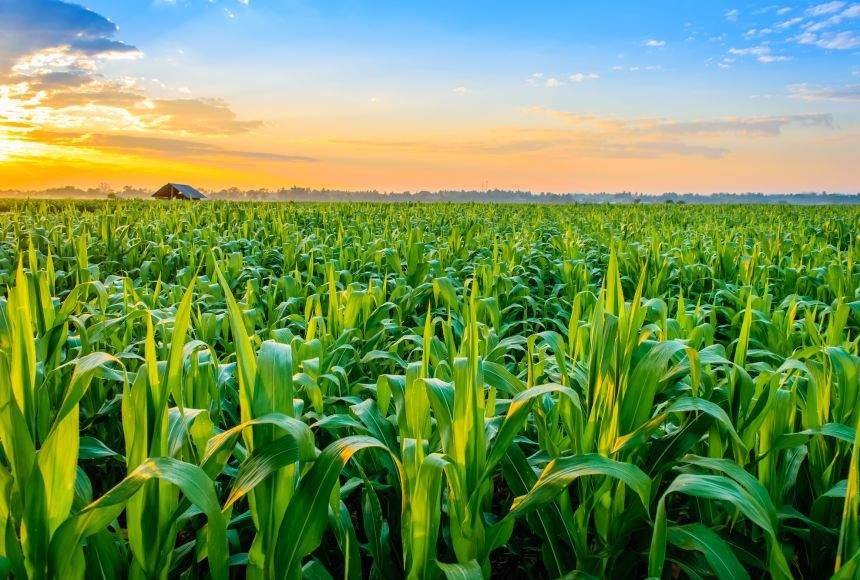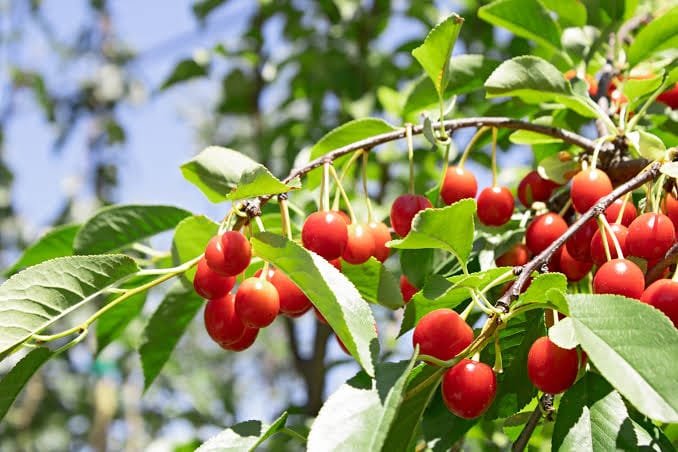Introduction

Fruit and plantation crops play a vital role in ensuring nutritional security, income generation, employment creation, and ecological sustainability. These crops not only enrich our diets with essential vitamins, minerals, and fiber but also serve as valuable cash crops for farmers across tropical and subtropical regions. The cultivation of fruit and plantation crops has been expanding rapidly due to the growing demand for fresh fruits, processed products, and export opportunities. Production technology refers to the systematic approach and scientific practices applied to achieve high-quality, high-yielding, and sustainable fruit and plantation crop production.
This includes everything from site selection, propagation, planting, nutrition, irrigation, pest and disease management, to harvesting and post-harvest handling. By adopting modern production technology, farmers can increase productivity, ensure product quality, and reduce environmental impacts, thereby contributing to food security and economic development.
Summary of Production technology for Fruit and plantation crops
- Proper site selection, along with effective propagation methods like seeds, grafting, and micropropagation, and adopting suitable planting systems, helps establish healthy orchards and ensures high productivity.
- A balanced approach to nutrient supply, precise irrigation techniques, and careful crop management practices such as pruning, training, flowering control, and pest control are essential for strong plant growth and optimal fruiting.
- Harvesting fruits at the right time, followed by proper post-harvest handling like grading, packing, storing, and processing, maintains quality, reduces spoilage, and boosts market value.
Table of Contents
Classification of Fruit and Plantation Crops
Fruit and plantation crops are broadly classified based on their growth habits and use. Understanding the classification helps in selecting appropriate cultivation techniques, care, and management practices for each crop type.
1. Fruit Crops

These are mainly grown for fresh consumption and provide a rich source of dietary fiber, vitamins, and minerals. They can be further categorized into:
- Tropical fruits: Mango, banana, papaya, pineapple, jackfruit, and custard apple thrive in warm climates with consistent rainfall.
- Sub-tropical fruits: Guava, citrus, litchi, pomegranate, and fig grow in areas with moderate temperatures.
- Temperate fruits: Apple, pear, plum, cherry, and peach are suited to colder climates and often require chilling hours for proper fruit development.
2. Plantation Crops

These are large perennial crops grown mainly in tropical climates for commercial purposes. They play a significant role in the national economy and export earnings. Categories include:
- Beverage crops: Tea and coffee are high-value crops grown in hilly and high-rainfall areas.
- Oil crops: Coconut and oil palm are major sources of edible oils and industrial raw materials.
- Spices and others: Arecanut, cocoa, and rubber are cultivated for their diverse commercial uses ranging from chewing products to confectionery and industrial rubber production.
Site Selection and Soil Preparation for Fruit and plantation crops
a. Site Selection
Choosing the right site is crucial for the successful cultivation of fruit and plantation crops. The selected site should have good drainage, moderate slope to prevent water stagnation, and should not be prone to flooding or strong winds. Sunlight exposure is important, as most fruit crops require full sun for maximum yield. The climate must align with the specific crop’s requirements in terms of temperature, humidity, and rainfall.
b. Soil Preparation
The soil should be deep, fertile, and well-drained with good water-holding capacity. Proper soil preparation starts with ploughing the land to break up clods and improve aeration. Leveling is done to facilitate uniform water distribution. Organic matter such as compost or farmyard manure is added to enrich the soil with nutrients and beneficial microbes. Pits or trenches are dug based on recommended spacing for the crop, and basal doses of fertilizers are incorporated before planting.
Propagation Techniques
Propagation is the process of multiplying plants. For fruits and plantation crops, propagation is essential to ensure the continuity of desired traits and plant uniformity. It can be done either by sexual (seeds) or asexual (vegetative) methods.
a. Seed Propagation
This is the simplest and most economical method, used primarily for producing rootstocks or crops like papaya and citrus. However, it results in genetic variability, which can lead to inconsistent fruit quality and maturity.
b. Vegetative Propagation
This method maintains the genetic identity of the parent plant, producing true-to-type progeny. It includes:
- Grafting: Common in mango, guava, and sapota, where a scion from the desired variety is joined to a rootstock.
- Budding: Used in citrus and rose apple, where a bud from the parent plant is inserted into the rootstock.
- Layering: Litchi and jasmine are propagated by inducing root formation on a stem while still attached to the parent.
- Cutting: Grapes, fig, and pomegranate are propagated by planting stem cuttings that develop roots.
- Micropropagation: Tissue culture is used for crops like banana, pineapple, and orchid to rapidly multiply disease-free plants.
Planting Systems and Spacing
Proper planting systems for Fruit and plantation crops ensure optimal use of space, sunlight, and inputs, leading to higher productivity.
- Square system: Plants are placed at equal distances in rows and columns; easy to layout and manage.
- Rectangular system: Provides wider spacing between rows for machinery movement and intercultural operations.
- Hexagonal system: Allows more plants per unit area by placing them at hexagon vertices; maximizes land use.
- Contour planting: Used in hilly regions; plants are placed along the contour lines to minimize soil erosion and water runoff.
Nutrient Management for Fruit and plantation crops
Balanced and timely nutrition is key to healthy plant growth and fruit production.
a. Organic Manures
Organic sources like farmyard manure, vermicompost, and green manure improve soil structure, enhance microbial activity, and supply macro- and micronutrients gradually.
b. Chemical Fertilizers
Fertilizers like nitrogen (N), phosphorus (P), and potassium (K) are applied based on soil and leaf analysis. Micronutrients such as zinc, boron, and iron are also essential for flowering, fruiting, and physiological functions.
c. Application Methods
Nutrients are applied by broadcasting (spreading across the soil), band placement (localized placement near root zone), or fertigation (mixing with irrigation water in drip systems).
Irrigation Management for Fruit and plantation crops
Efficient water use ensures optimal plant health and resource conservation.
a. Irrigation Methods
- Surface irrigation: Involves flooding furrows or basins; widely used but may lead to water wastage.
- Drip irrigation: Delivers water directly to the root zone; conserves water and enables fertigation.
- Sprinkler irrigation: Mimics rainfall; suitable for uneven terrain and sandy soils.
b. Scheduling
Irrigation frequency and volume depend on crop stage, soil moisture, evapotranspiration rates, and weather conditions. Young plants need frequent watering, while mature trees are irrigated based on critical growth stages like flowering and fruit development.
Training and Pruning
These horticultural practices improve plant architecture, air circulation, sunlight exposure, and fruit quality.
a. Training
Training involves shaping the plant structure through physical support and manipulation. Common training systems include espalier (flat against a frame), open-center (branches spread from a low central point), and central leader (single upright trunk).
b. Pruning
Pruning removes diseased, dead, or weak branches to stimulate new growth and regulate fruiting. The timing, intensity, and method of pruning vary by crop. For example, grapes are pruned heavily each year, while mango requires light pruning to maintain canopy shape.
Flowering and Fruit Set Management
Ensuring proper flowering and fruit set is essential for a profitable harvest.
a. Use of Growth Regulators
Plant hormones like gibberellins and auxins are applied to promote flower induction, fruit set, and retention. Ethephon may be used to enhance flowering in pineapple.
b. Pollination Management
Some crops, like apple and litchi, require cross-pollination. Introducing honeybee colonies or planting compatible pollinizers improves pollination efficiency.
c. Fruit Thinning
Thinning reduces fruit load, enhancing fruit size, quality, and uniformity. It prevents alternate bearing and reduces pressure on plant resources.
Pest and Disease Management
Protecting crops from biotic stress is crucial for sustainable yields.
a. Integrated Pest Management (IPM)
IPM integrates multiple control methods:
- Cultural: Crop rotation, sanitation, and intercropping.
- Biological: Using beneficial organisms like ladybird beetles and parasitoids.
- Mechanical: Traps, nets, and physical removal.
- Chemical: Pesticides used only when necessary, following economic thresholds.
b. Major Pests and Diseases
- Pests: Fruit flies, stem borers, aphids, and mites cause direct damage.
- Diseases: Powdery mildew, anthracnose, bacterial wilt, and root rot affect growth and yield.
Harvesting and Post-Harvest Handling
Timely and careful harvesting ensures the best quality and market value.
a. Maturity Indices
Fruits are harvested when they reach physiological maturity. Indicators include color change, aroma, sugar content (TSS), and days after flowering.
b. Harvesting Methods
Fruits are harvested by hand, with clippers, or mechanically. Care is taken to avoid bruising and damage.
c. Post-Harvest Practices
- Cleaning and grading: Remove dirt and sort fruits by size and quality.
- Waxing and packaging: Apply protective coatings and pack in ventilated crates.
- Cold storage: Reduces spoilage and extends shelf life.
Economics and Marketing
Understanding the business side of cultivation improves farm profitability.
a. Cost of Cultivation
Includes land preparation, planting material, inputs, labor, irrigation, and plant protection costs.
b. Market Access
Access to local and export markets enhances income. Farmers benefit from direct marketing, contract farming, e-commerce, and cooperatives.
c. Value Addition
Processing fruits into juices, jams, jellies, dried slices, or pulp increases shelf life and value.
Sustainability and Future Prospects
Long-term productivity requires environmentally responsible practices.
a. Organic Farming
Relies on compost, biofertilizers, and biopesticides. Improves soil biodiversity and reduces chemical dependence.
b. Precision Farming
Utilizes technology like GPS, sensors, and drones to apply inputs precisely and reduce waste.
c. Climate-Resilient Varieties
Breeding efforts are focused on developing crop varieties that can withstand drought, salinity, pests, and erratic climates.
Conclusion
Production technology for fruit and plantation crops integrates scientific knowledge with practical field applications to boost productivity, quality, and sustainability. It involves a wide range of components, from site selection and propagation to post-harvest and marketing strategies. By adopting improved practices in irrigation, nutrition, pest control, and crop management, farmers can enhance yields and income while conserving natural resources.
As global demand for healthy, diverse, and sustainable produce increases, fruit and plantation crop technologies must evolve through innovation, education, and policy support. The future of fruit and plantation crop production lies in integrating traditional wisdom with modern technologies and sustainable approaches. This not only ensures economic prosperity for farmers but also strengthens food systems, environmental resilience, and rural development across the world.
Frequently Asked Questions (FAQs)
What is production technology for fruit and plantation crops?
It is a comprehensive agricultural approach that involves choosing the right site, using appropriate propagation and planting methods, managing nutrients and water efficiently, controlling pests and diseases, and applying proper harvesting and post-harvest practices to achieve higher yield, better fruit quality, and long-term sustainability.
How does high-density planting benefit fruit orchards?
High-density planting allows more trees per unit area, improving the utilization of sunlight, nutrients, and water, which leads to early fruiting, higher yields, and better land efficiency especially valuable in small or hilly farms.
Which propagation methods are used in fruit crops?
Propagation in fruit crops is done through various methods like seeds for rootstocks and asexual techniques such as grafting, budding, layering, cuttings, and micropropagation to produce uniform, true-to-type, and disease-free planting materials.
Related Articles

